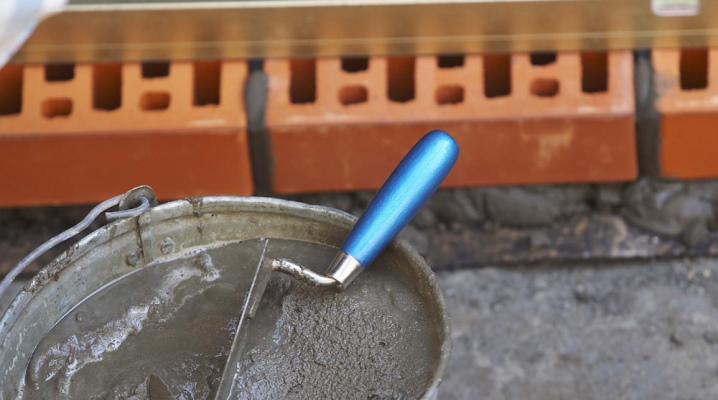How much cement is needed per cube of concrete?

How much cement per cubic meter of concrete is required for construction work? It is this question that is very often asked by those who plan to engage in construction or repair work in the foreseeable future. Concrete is based on gravel or crushed stone, and a mixture of sand and cement mixed with water acts as a binding element.
In order to prepare everything correctly, in addition to the production technology itself, you need to know how much cement is consumed per cube of concrete. This is important not only for calculating the required amount of materials, but also because strength will depend on this.
Factors
So let's take a look at what factors are important to consider:
- First of all, you need to know that calculations are carried out with an accuracy of a kilogram, and in the case of crushed stone consumption - up to 5 kilograms. This is the only way to correctly calculate the basic properties: mobility, rigidity and strength. The lower the consumption of the main binder is, the more dense and reliable the final material will be.
- In calculations, it is of great importance choice of brand. The total material consumption will depend on it, which in the end can make the final product cheaper or more expensive. The choice of the grade should be carried out taking into account that the grade of concrete obtained as a result should be lower than the grade of the cement used. So, for example, when preparing M100 concrete, you need to use M300 cement, while one cube will need about 160-170 kilograms. If you use M400 cement, then its consumption will be large - about 180-195 kilograms.
- Experts recommend when making concrete measure components in proportions. Consider an example, 1: 5. This means that 1 part of cement accounts for 5 parts of sand. You can take any container and measure both the amount of cement and the amount of sand with it. The calculation will vary depending on the brand of cement. So, for the M600 brand, this ratio will be 1: 3, and for the M400, 1: 2.
- After adding water to the mixture, the volume of the solution becomes smaller compared to the volume of the mixture in dry form.

Tables
The data required for the calculation are presented in the following tables.
|
Required concrete grade |
Mass proportions, C: P: U (kilogamm) | Volumetric composition per 1 liter of cement, P: U (liters) | The resulting volume of concrete from 1 liter of cement |
|---|---|---|---|
| M100 | 1 : 4.6 : 7.0 | 4,1 : 6.1 | 7.8 l. |
| M150 | 1 : 3.5 : 5.7 | 3.2 : 5.0 | 6.4 l. |
| M200 | 1 : 2.8 : 4.8 | 2.5 : 4.2 | 5.4 l. |
| M250 | 1 : 2.1 : 3.9 | 1.9 : 3.4 | 4.3 l. |
| M300 | 1 : 1.9 : 3.7 | 1.7 : 3.2 | 4.1 l. |
| M400 | 1 : 1.2 : 2.7 | 1.1 : 2.4 | 3.1 l. |
| M450 | 1 : 1.1 : 2.5 | 1.0 : 2.2 | 2.9 l. |
|
Required concrete grade |
Mass proportions, C: P: U (kilogamm) | Volumetric composition per 1 liter of cement, P: U (liters) | The resulting volume of concrete from 1 liter of cement |
|---|---|---|---|
| M100 | 1 : 5.8 : 8.1 | 5,3 : 7.1 | 9.0 l. |
| M150 | 1 : 4.5 : 6.6 | 4.0 : 5.8 | 7.3 l. |
| M200 | 1 : 3.5 : 5.6 | 3.2 : 4.9 | 6.2 l. |
| M250 | 1 : 2.6 : 4.5 | 2.4 : 3.9 | 5.0 l. |
| M300 | 1 : 2.4 : 4.3 | 2.2 : 3.7 | 4.7 l. |
| M400 | 1 : 1.6 : 3.2 | 1.4 : 2.8 | 3.6 l. |
| M450 | 1 : 1.4 : 2.9 | 1.2 : 2.5 | 3.2 l. |
| Required ductility of concrete |
Water consumption at the largest particle size of aggregates (in l / m3) |
|||||||
|---|---|---|---|---|---|---|---|---|
| gravel, mm | crushed stone, mm | |||||||
| 10 | 20 | 40 | 80 | 10 | 20 | 40 | 80 | |
| Very flexible | 215 | 200 | 185 | 170 | 230 | 215 | 200 | 185 |
| Medium plastic | 205 | 190 | 175 | 160 | 220 | 205 | 190 | 175 |
| Low plastic | 195 | 180 | 165 | 150 | 210 | 195 | 180 | 165 |
| Non-plastic | 185 | 170 | 155 | 140 | 200 | 185 | 170 | 155 |
The most optimal option in the ratio of parts of sand and cement in the manufacture of a cube of concrete is 0.5 cubic meters of sand, 0.8 - crushed stone (gravel) and a certain part of the filler. The amount will depend on the specific location of use.
For example, M200 concrete, which is perfect for forming paths and pouring the foundation, will require the use of 280 kg of cement. For concrete M300, more cement will be needed - about 380 kg.













The comment was sent successfully.